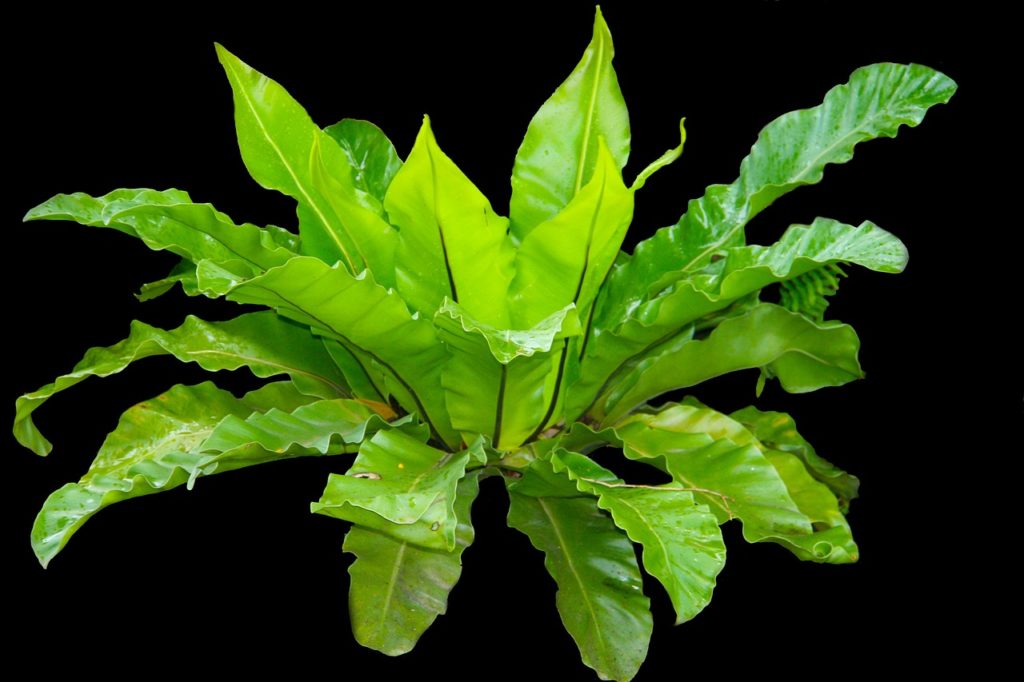
Have you ever wished to bring a piece of nature into your home but struggled to find the right plant that thrives indoors? Look no further than the Bird’s Nest Fern, a humidity-loving plant that can transform your living space into a lush tropical paradise.
With its unique and attractive leaf structure, the Bird’s Nest Fern is a beautiful addition to any interior design scheme and an excellent air purifier that can improve your living environment.
As a relatively easy houseplant to care for, the Bird’s Nest Fern is an ideal option for those who want to add greenery to their homes but have limited experience with plants. Its resilience and ability to adapt to different environments make it a perfect choice for people who live in apartments or homes with limited natural light.
In this article, we will explore the characteristics of the Bird’s Nest Fern, the benefits of having it in your home, and tips on how to care for it. Additionally, we will provide creative ideas on how to incorporate this beautiful plant into your home decor.
Key Takeaways
- Bird’s Nest Fern is a humidity-loving plant that is easy to care for and can transform any living space into a tropical oasis.
- Its distinctive nest-like center and broad, arching fronds grow up to two feet in length and make it a beautiful addition to any interior design scheme.
- Bird’s Nest Fern is an excellent air purifier that can remove toxins and improve the quality of the living environment while also reducing stress levels and boosting productivity.
- Proper care for Bird’s Nest Fern includes attention to watering and humidity needs, lighting requirements, and soil and fertilizer, and it can be displayed in various DIY planters and paired with natural materials for an organic feel.
Characteristics of the Bird’s Nest Fern
The Bird’s Nest Fern is a tropical plant with broad, arching fronds and a distinctive nest-like center, giving it a unique appearance and enabling it to thrive in humid environments. Its leaf structure is composed of dark green, leathery fronds that grow up to two feet in length and are shaped like a bird’s nest. The fern’s growth pattern is characterized by its ability to grow in a circular shape, with new fronds emerging from the center of the plant as it matures.
The Bird’s Nest Fern is an excellent choice for those looking for a low-maintenance houseplant that requires minimal care. It is a slow-growing plant that prefers indirect light and moist soil. Its unique leaf structure and growth pattern make it an attractive addition to any home or office, and its ability to thrive in humid environments makes it an ideal choice for bathrooms or kitchens.
With proper care, the Bird’s Nest Fern can live for several years, providing a touch of tropical elegance to any living space.
Benefits of Having a Bird’s Nest Fern in Your Home
Having a bird’s nest fern in your indoor space can provide many benefits beyond just being a beautiful addition to your home decor. One of the most notable benefits is its ability to purify the air, making it a great choice for those looking to improve the air quality in their homes.
In addition to its air-purifying properties, having a bird’s nest fern in your home can help reduce stress levels and boost productivity. Studies have shown that being around plants can positively affect our mental health, including reducing stress and anxiety levels. This can lead to an overall improvement in our well-being, allowing us to feel more relaxed and focused.
With its natural decor and aesthetic enhancement, a bird’s nest fern can bring a sense of calm to any space, making it an ideal addition to any home or office looking to create a peaceful and productive environment.
Tips for Caring for Your Bird’s Nest Fern
Caring for your bird’s nest fern requires attention to its watering and humidity needs, lighting requirements, and soil and fertilizer.
Watering and humidity are crucial to the fern’s survival, as it thrives in moist environments.
In terms of lighting, the fern prefers indirect or filtered light and can suffer in direct sunlight.
The right soil and fertilizer can also provide the nutrients for healthy growth.
Watering and Humidity Needs
Maintaining appropriate moisture levels is crucial for the bird’s nest fern’s survival, as it requires high humidity and consistent watering to mimic its natural rainforest habitat.
Here are some tips to help you meet your bird’s nest fern’s watering and humidity needs:
-
Watering frequency: The bird’s nest fern prefers to be kept consistently moist but not waterlogged. Water the plant when the top inch of soil feels dry to the touch, which may be once or twice a week, depending on the environment. Avoid over-watering, as this can lead to root rot and other issues.
-
Humidity control: The bird’s nest fern thrives in high humidity, which can be challenging to achieve in a typical indoor environment. To increase humidity, mist the plant regularly or place it on a tray of pebbles filled with water. You can also use a humidifier or group plants together to create a microclimate that mimics its natural habitat.
You can help your bird’s nest fern grow strong and healthy by providing consistent and appropriate watering and humidity. Remember to monitor the plant regularly and adjust its care as needed to ensure it continues to thrive in your home.
Lighting Requirements
Proper lighting is essential for the growth and development of the bird’s nest fern. While this plant thrives in humid environments, it still needs access to the right amount of natural or artificial light. When considering natural lighting, placing the fern in a location that receives indirect sunlight is important. Direct sunlight can scorch the leaves and cause permanent damage. Fluorescent lights are the best option for those who want to use artificial light.
When it comes to placement options, there are a few things to consider. First, the bird’s nest fern should be placed in a spot that receives adequate natural or artificial light. Second, it should be placed in an area that has a consistent temperature and humidity level. Finally, it’s essential to choose a location that is away from cold drafts or heat sources.
By following these guidelines, the bird’s nest fern will thrive and become a beautiful addition to any indoor space.
Soil and Fertilizer
Soil quality and appropriate fertilizer application are key factors in ensuring optimal growth for the bird’s nest fern.
The bird’s nest fern is a humidity-loving plant that thrives in moist environments and requires the right soil to grow well.
The ideal soil for the bird’s nest fern is a well-draining, nutrient-rich mix that retains moisture without becoming waterlogged.
Common mistakes people make when it comes to soil include using soil that is too heavy or dense, which can lead to root rot, and using soil that is too light and does not retain moisture well.
Best practices for soil and fertilizer application include using a soil mix that is specifically designed for ferns, which will contain the right balance of organic matter, perlite, and other ingredients to create the ideal growing environment.
Additionally, it is important to fertilize the bird’s nest fern regularly, but not too much.
Over-fertilization can cause the plant to grow too quickly, which can lead to weak growth and susceptibility to pests and diseases.
A good rule of thumb is to fertilize once a month during the growing season and use a balanced, water-soluble fertilizer specifically formulated for ferns.
Following these best practices ensures your bird’s nest fern thrives and adds beauty to your home or office.
Creative Ways to Incorporate the Bird’s Nest Fern into Your Home Decor
When incorporating the bird’s nest fern into your home decor, consider placing it in a hanging planter to create a cascading effect that adds a touch of natural elegance to any room. DIY planters, such as macrame or woven baskets, are great options for showcasing this humidity-loving plant in a unique and creative way.
These planters allow the fern to be displayed at eye level and save valuable floor space, making them perfect for small living areas. In addition to utilizing DIY planters and hanging displays, color schemes and styling ideas are important factors to consider when incorporating the bird’s nest fern into your home decor.
The fern’s lush green leaves pair well with neutral color palettes, such as white or beige walls and furniture, creating a calming and refreshing atmosphere. Pairing the fern with natural materials, such as rattan or wood, also adds to the organic feel of the space. Whether you choose to incorporate the fern into a minimalist or bohemian-inspired room, this plant’s versatility makes it a great addition to any home decor.
Final Observations
In conclusion, the Bird’s Nest Fern is a unique and fascinating houseplant that thrives in humid environments. Its lush green fronds and compact shape make it popular among indoor plant enthusiasts. The fern’s ability to purify the air and release moisture into the surrounding environment can have numerous benefits for your health and well-being.
Like the Bird’s Nest Fern, we, too, can thrive in environments that are conducive to our growth and development. Just as this plant needs the right amount of moisture and humidity to flourish, we, too, need the right conditions to reach our full potential.
By surrounding ourselves with positivity, support, and encouragement, we can create an environment that nourishes our mind, body, and spirit. Let the Bird’s Nest Fern be a reminder to cultivate the right environment for ourselves and those around us, and watch as we thrive and flourish just like this remarkable houseplant.
